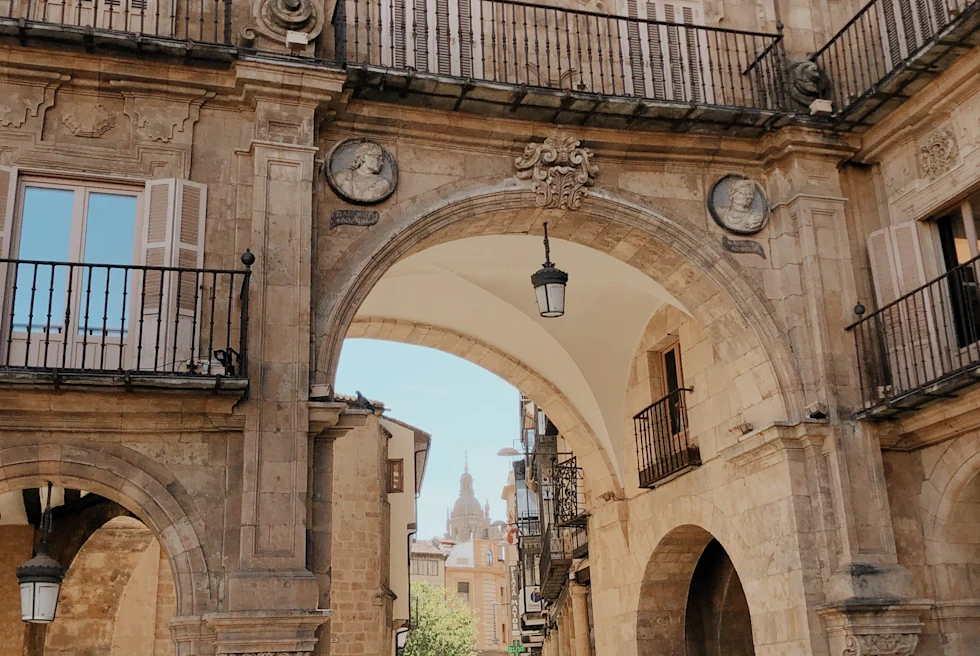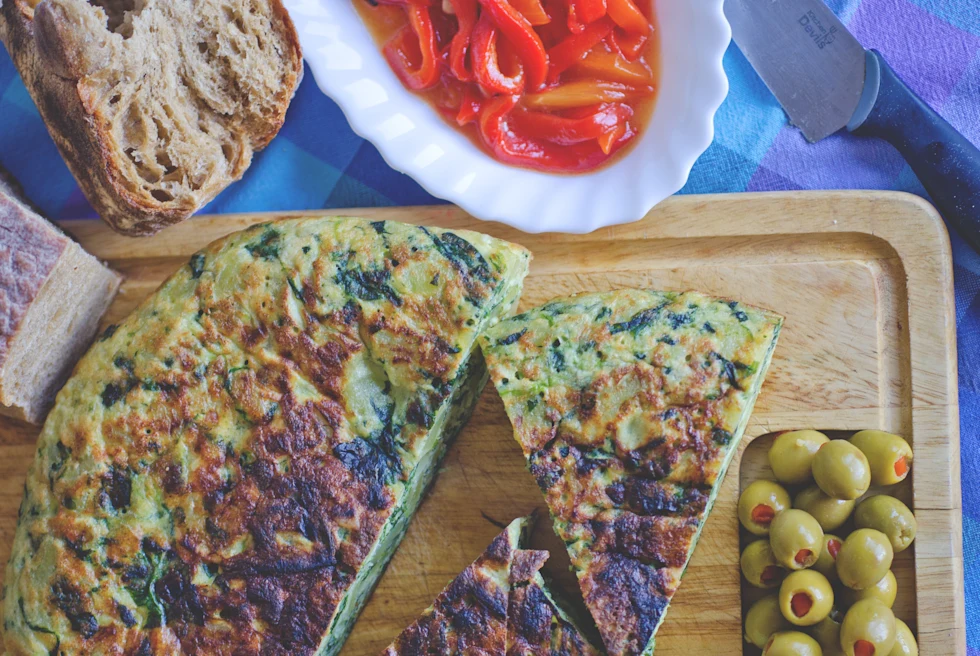
Curator’s statement
Madrid is the capital of Spain and thus a beacon for all-things-Spanish and Spanish culture. However, it is a relatively modern city by European standards and most of what Spaniards would consider "local culture" and "Spanish culture" is actually located outside the city and in the surrounding regions of Castilla y León and Castilla la Mancha. Accessible by car, bus and train, most of the cities in the region are very well known for their history, culture and of course, food and wine! If you're tired of the city life, or just want a different perspective on Spanish culture than what you'd find in Madrid due to its modernity, you don't have to look very far! Skip the Museo de Jamón and explore the true heart of Spain!
The Fora Difference
Book with Elizabeth to access exclusive perks and experiences on your trip.
Killer perks
Free upgrades, spa credits and more—we got you
Personalized recs
Customized travel planning for your style
Insider knowledge
Expert advice from people who’ve actually been there
Where to stay in Madrid
Unlock perks by contacting Elizabeth to book your trip.
Things to do in Madrid

Must-Visit
In Madrid, the Plaza Mayor, Parque del Retiro & Jardín Botánico, Museo del Prado, Museo Thyssen-Bornemisza and Museo Nacional Centro de Arte Reina Sofía are all the basic places to visit and are pretty self-explanatory. The Museo Thyssen-Bornemisza is one of the largest private art galleries in the world. The Reina Sofía is one of the most famous modern art museums in the world. It is housed in an old military hospital and holds the most famous of Picasso's paintings: Guernica, painted by the artist while living in Paris. He was commissioned by the Spanish government for the Spanish Pavilion in the World Fair of 1937. He read about the bombings on a small town named Guernica (Gernika in the local spelling) in the Basque Country by German and Italian forces (at the orders of Francisco Franco, general of the Fascist Army and future dictator of Spain) during the height of the Spanish Civil War. For a less already-been-done experience, definitely check out the Templo de Debod at the Parque de la Montaña about a kilometer from the Plaza de España. It's a millenia old Egyptian temple gifted to the government of Spain by the Egyptian government open to the public. It sports views of the Palacio Real and the Catedral de la Almudena. It is one of the best-kept secrets in the entire city and not very frequented by tourists. Definitely a local favorite!
Salamanca
Salamanca is predominantly a university city as it houses the oldest university in Spain and one of the oldest in Europe. Legend says that if you spot the frog on the façade of the University, you will ace your classes! The Catedral Vieja de Santa María de la Sede (the old cathedral) is right next to the new one, and while the newer cathedral is beautiful in its own right (keep an eye out for more modern decorations to the outer doors, such as an astronaut and a monkey eating ice cream.) The old cathedral is much more storied, built in the Romanesque style so it's darker and less airy as a Gothic cathedral. The Museo Casa Lis is a museum dedicated to Art Deco, housed in a building designed and constructed at the height of the Art Deco/Art Nouveau movement that overlooks the Río Tormes. The Puente Romano is just what it sounds like— a bridge built during the Roman Empire. The Huerto de Calixto y Melibea is a small garden named in homage of two characters from Medieval folklore, a kind of Romeo and Juliet tale (instead of a priest you have a matchmaker who specializes in love potions.) It's a very popular destination to visit for couples.
Segovia
Definitely check out the Aqueduct. Built during the Roman period to bring water from the surrounding mountains into the city, it is now mostly non-operational, but is one of the largest icons of Roman architecture in Europe. The Alcázar, built in the 12th century, is the birthplace of Isabella of Castille (who, along with her husband, Ferdinand of Aragón, provided funds to Christopher Columbus to sail across the Atlantic) as well as many other illustrious names in Spanish history such as Alfonso X the wise. It's said to be the inspiration for Walt Disney's Sleeping Beauty castle, along with Neuschwanstein in Bavaria. Bonus points if you cross the Eresma River to head to the Pradera de San Marcos where you can see the castle in all its glory.
Toledo
Known as the City of Three Cultures, Toledo was one of the few cities in Europe where Jews, Muslims and Christians lived together in relative peace and each religion is represented with various museums and monuments dedicated to them. The Cathedral and Synagogue are the two of the most popular houses of worship and are highly recommended for insights into how each faith co-existed, both under Christianity, Islam and Christianity. For art fans, this is where famed painter El Greco spent most of his life and there's a museum dedicated to him here. I personally recommend also checking out the Iglesia de Santo Tomé de Toledo, where my personal favorite El Greco work, El Entierro del Conde de Orgaz (The Burial of the Count of Orgaz) is featured in the atrium. For the perfect Insta-shot of Toledo, there's a viewpoint on the other side of the Tagus, the Mirador del Valle, where you can see the old city in all its glory.
San Lorenzo de El Escorial
Located in the outskirts of Madrid, San Lorenzo de El Escorial features the palace built by Felipe II as his residence when he made Madrid the capital of Spain (previously it was located in Valladolid.) It houses a monastery, as Felipe was a true believer and valued austerity over all.
Ávila
Ávila is a tiny city west of Segovia that is 2 hours away by train. If you do decide to make it out here, it features a beautiful, fully-intact Medieval wall. Saint Teresa of Ávila was also born here, and there is a church dedicated to her.
Valladolid
Valladolid was the capital of Spain during most of the period during the conquest of the Americas, and while it's probably the least-visited of all the major Spanish capitals (both regional and historical,) it houses an annual Film Festival at the Teatro Zorrilla. It is a major hub in the literary community of Spain as author Miguel Delibes, poet Calderón de la Barca and playwright José Zorrilla were born here.
Places to Eat & Drink in Madrid

Madrid
Restaurante Mareas Vivas features traditional Galician cuisine (from the northwest of Spain— mainly seafood) at the best price point in the entire center of Madrid. Most other restaurants in the area that I've tried have been overpriced and overrated, and aside from a few bars, finding actual traditional Spanish food is hard to come by. This is by far my favorite place and they even offer a traditional apéritif on the house after your meal, which is very common in Spain. The Chocolatería de San Ginés is the most popular place to get traditional Spanish churros with chocolate sauce. Dip your churros into the dense, creamy chocolate and enjoy your day! La Olla de Marta is great for a quick drink and a few tapas when you need to take a break. It has a very neighborhood bar vibe.
Note that in most of these cities, Spanish dining hours are different than in most other countries, with the main meal being between 2-4 pm, a snack time between 5-7 pm and an evening meal between 9-11. If you show up outside of these times, don't be surprised if the kitchen is closed and only a few tapas are able to be served. Drinks and coffee are served all day, but food may not be as accessible outside of Madrid and Toledo, and possibly Salamanca and Valladolid. Tapas are always served during all meal times.
Salamanca
Restaurante La Hoja 21 is located near the Plaza de Colón, serving an avant-garde take on traditional Castilian food. Reservations are recommended! El Zaguan is located a block away from the central Plaza Mayor and serves relatively affordable, traditional Spanish cuisine in a recently renovated building. Order the vermouth (vermut in Spanish.) Restaurante Jero has a gluten-free menu alongside traditional grill options that’s also close to the Plaza Mayor.
Segovia
La Codorniz serves traditional Castilian food and is located near the Romanesque church of San Millán (also worth a visit.) It's popular for people who aren't as familiar with traditional Castilian food (which is generally heavy and meaty given the region,_ but is highly recommended by locals for being authentically traditional. If you prefer to stay closer to the Aqueduct, Restaurante Maribel is a perfectly valid alternative as it also serves traditional Castilian food and comes highly recommended by locals. Both restaurants serve cochinillo, suckling pig, which is a dish Segovia is best known for. If you're not a fan of the concept of eating your Biology 2 dissection experience, go for the lamb, it's also a typical dish! Get some drinks at El Sitio, located near the Cathedral and the Plaza Mayor. If you're not in the mood for a full meal but want to try the local specialties, this is a great place. You can also check out El Secreto de San Clemente near the Aqueduct.
Toledo
Taberna El Botero is located a block away from the Cathedral and is known for its cocktails and excellent traditional food in a Medieval building that looks the part. Reservations are recommended! For the beer fans, La Abadía Cervecería comes highly recommended! Perfect for tapas and trying Spanish beers and wines. The wine culture is still paramount in Spain, but beer culture is growing in popularity. Located in an old flour factory as the name suggests, Restaurante La Fábrica de Harina has a traditional menu with a modern touch, and is perfect for grabbing some tapas and even a full meal around dinner time (lunch hours are between 2-4 pm.)
Valladolid
The Restaurante Pide por esa Boquita (I’m personally a fan of the name loosely translated as: Your Mouth is asking for This) uses a special flour in their dishes that has a very low (if any) gluten content, but if you do have celiac disease, let the staff know so they can accommodate accordingly. Reservations can be made online and the menu is “Mediterranean," with a slightly modern touch. Fierabras is a restaurant dedicated to El Quijote, or Don Quixote, Miguel de Cervantes’ defining creation. For a slightly more creative alternative, head over to 5 Gustos for a more modern dining experience.

Travel Advisor
Elizabeth Hanchett

Get in touch with Elizabeth
Did you like this guide? Reach out to customize and book your own experience. Or, just to chat about travel in general.
You can expect a response from Elizabeth within 1–2 business days. You’ll also be subscribed to our traveler newsletter (you can unsubscribe at any time).
Looking to explore Northern Spain? Check out my guide: Insider's Guide to Basque Country: Bilbao & San Sebastian.